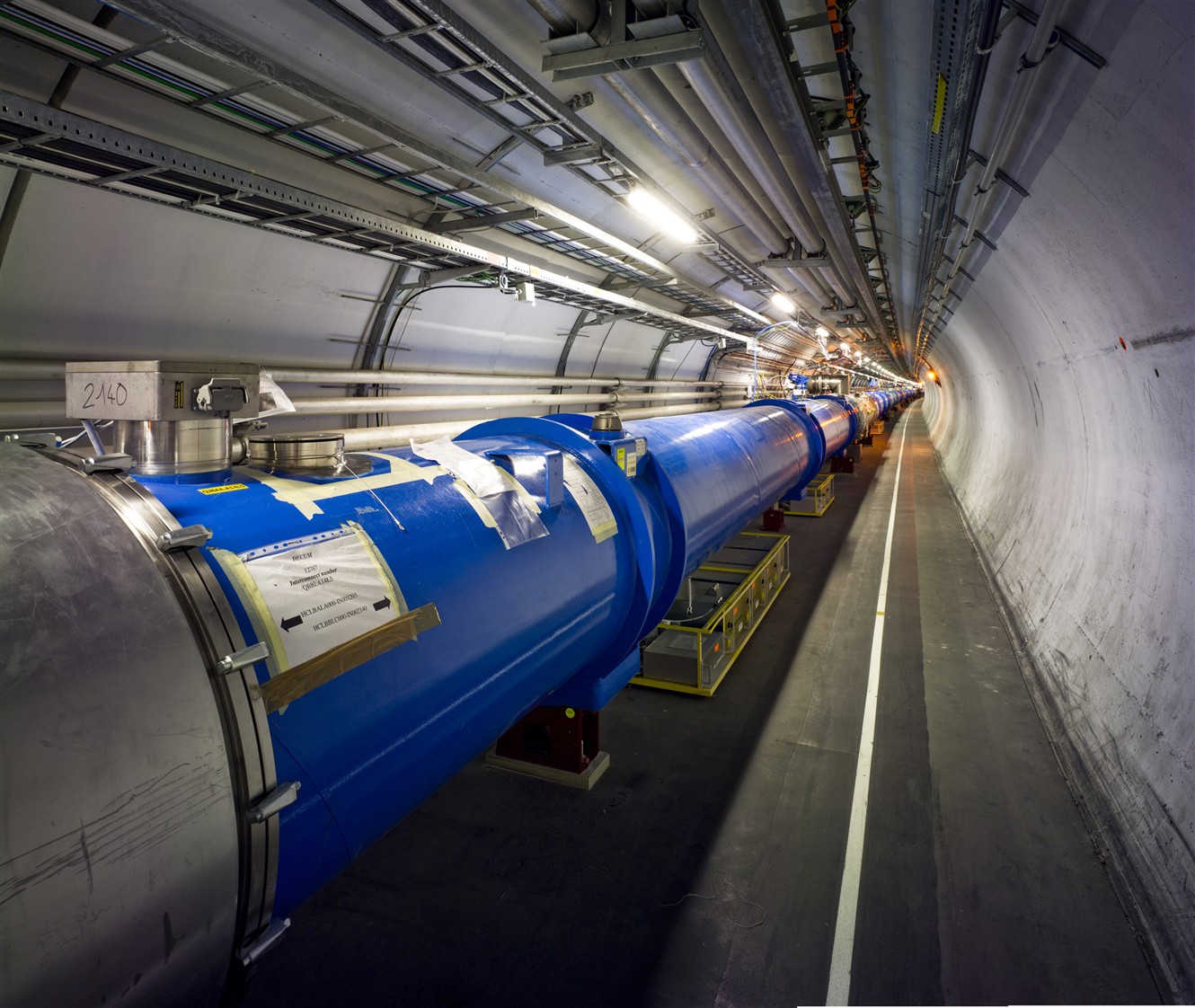The latest from the LHC

Three weeks ago vacuum leaks occurred in both Sector 8-1 and 2-3 (See previous update). While the cause and exact locations of the leaks are still unknown, it is suspected that they occurred in both cases from a flexible hose in the liquid helium transport circuits, which vented helium into the vacuum insulation.
In Sector 8-1 the leaks occurred while it was being maintained at 80 K in order to perform the resistance measurements on the copper part of the superconducting busbars. Less than 24 hours later a similar leak occurred in Sector 2-3 while it was being warmed from superconducting temperatures to 80 K to perform the busbar resistance measurement.
Both leaks happened where the final magnet of the sector (known as Q7) joins the electrical feedbox (called the DFBA). The end vacuum subsectors – a 200-metre stretch of the LHC sealed off by vacuum barriers – will be warmed to room temperature to locate the leaks and repair them. The rest of the sector will ‘float’ in temperature from 80 K. In Sector 2-3 the copper busbar measurements have already been made and the final subsector is currently being warmed. Once the busbar measurements have been made in Sector 8-1 the end subsector will also be warmed.
Two years ago, a similar leak occurred in Sector 4-5 during the first cool-down of the sector. The flexible hose was found to be the source of the leak and was replaced. The sector is currently at room temperature after busbar tests at 300 K. While the sector is still warm the flexible hose (left-of-point 5) has been cut out and replaced with a smaller, solid tube. Preliminary investigations showed signs of initial wear on the outside of the hose, probably due to friction between it and the stainless steel braid that encases it. In this way a repair solution has already been validated, and could be used in Sectors 2-3 and 8-1 if the flexible hoses are confirmed as the cause of the leaks.
In the four sectors that do not have the new pressure-release ports installed, work is still ongoing to remove the clamps on service ports and replace them with ‘pressure release springs’. This in effect turns the normal ‘service’ ports into pressure-release ports in the event of an increase in pressure. About half of the springs have already been fitted.

